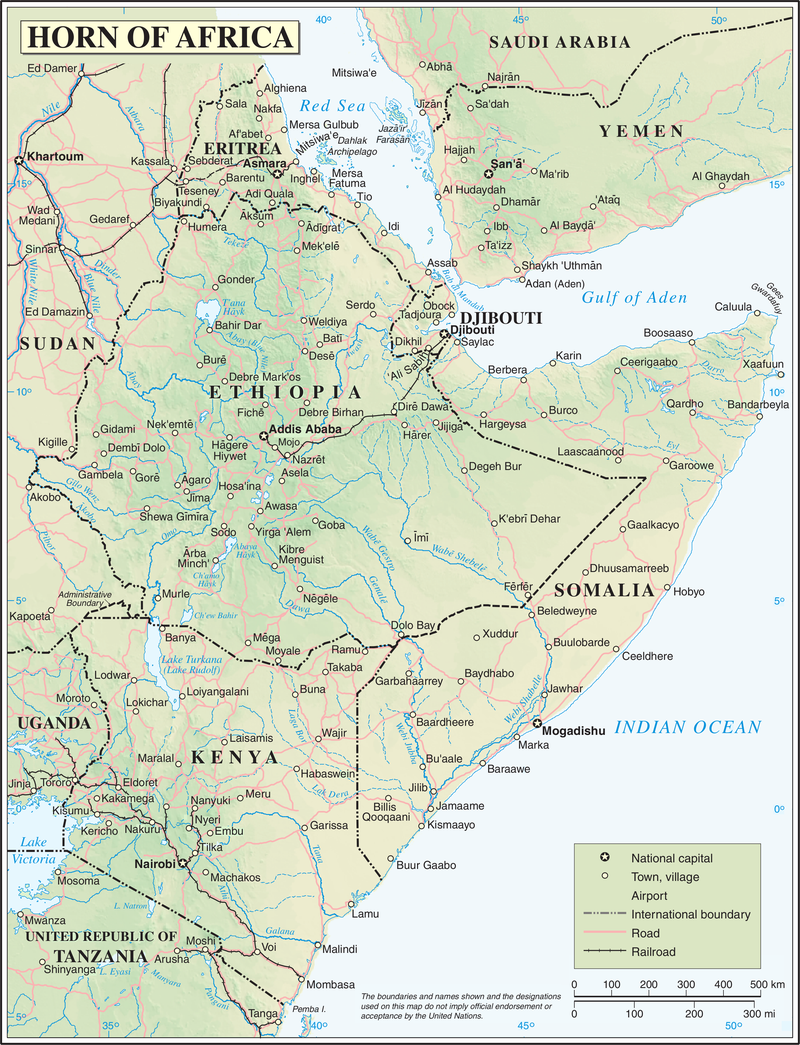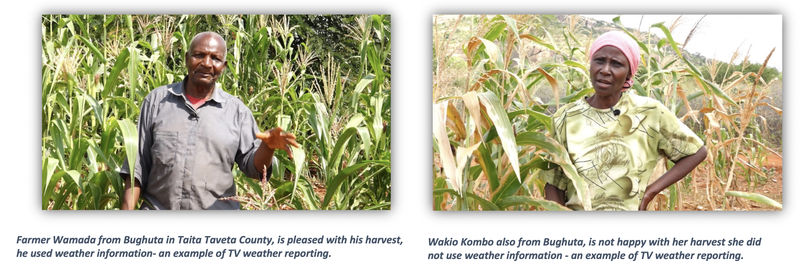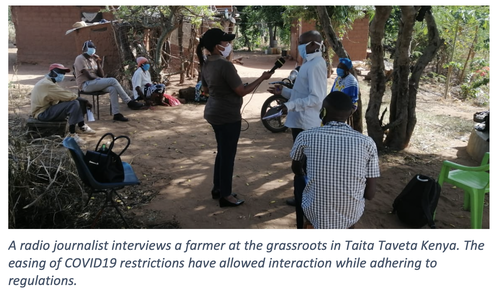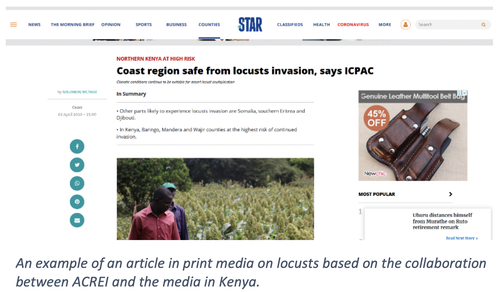Journalists share experiences in weather and climate reporting
By Collison Lore

There has been increased interest in weather and climate reporting in Eastern Africa. This is because a combination of weather and climate related challenges have best the region in quick succession. The destruction caused by the heavy rainfall that killed hundreds of people in Kenya, Uganda, Somalia, Rwanda and Ethiopia and also forced hundreds of thousands from their homes. Swarms of locusts have invaded East Africa, threatening crops that feed millions of people. These challenges in the region call for increased understanding of weather and climate and reporting in a simple and comprehensible manner devoid of jargon.
ACREI Project
The Agricultural Climate Resilience Enhancement Initiative (ACREI) recently hosted an online sharing experience forum, that brought together agriculture experts, meteorologists and journalists from Kenya, Uganda and Somalia. The forum attended by 37 participants and the journalists shared their experiences on how to report on climate change during the COVID19 crisis. The forum which was media led witnessed journalists from Kenya showcasing their application of the Season Media Action Plan (S-MAP). It was a learning opportunity for both journalists and weather and climate experts on how to reach the last mile in crucial communication. A farmer representative during the workshop stated that the reach of the media had increased over the last two seasons and called on more visits to the grassroots farmers. Other participants in the forum included FAO, WMO & ICPAC.
Discussions
The journalists presented a variety of topics ranging from use of print media, radio, television and social media. However due to the overwhelming dominance of radio in Eastern Africa region, it took the lion share of the discussions. The journalists shared detailed presentations of their work and the feedback that they received and how they completed the loop. They also discussed challenges and how they are working to overcome them.

The presentations by the Kenya journalists featured the application of S-MAP in the following areas:
- Effectiveness of weather information on radio
- Reporting weather and climate in print media
- Consistent flow of weather information in radio
- Training for reporting weather and climate in radio
- Reaching the farmer through radio
- Weather and farmers on television
- Weather ideas for livestock farmers on radio
- S-MAP and how it works (presented by ICPAC)
The sessions were therefore divided into three to cover the genres of radio, television and newspapers.
Key issues
The forum brought out the challenges facing journalists in Kenya and the other countries in the face of the COVID19 pandemic. The restricted movement of citizens and the regulations on social distancing have destabilized a key pillar of interaction for all categories of journalists. The Kenya team explained that they from early at the start of the COVID19 pandemic adopted Skype Conference Calls on a weekly basis.
An example of an article in print media on locusts based on the collaboration between ACREI and the media in Kenya.
These Skype Conference Calls allowed for questions from both the media and the partners on issues relating to both the weather forecast and the topic of the week. The sessions are recorded and the audio is shared in the Taita Taveta Media and Partners WhatsApp Group for trickle down to the radio stations, for communities at the grassroots. This has ensured a consistent flow of information on weather and climate.
A radio journalist interviews a farmer at the grassroots in Taita Taveta Kenya. The easing of COVID19 restrictions have allowed interaction while adhering to regulations.


A print journalist noted that he has written more articles on weather and climate during the COVID19 pandemic thanks to the weekly Skype Conference Calls. Most journalists identified resource challenges that hamper their procurement of data to participate in the numerous webinars and online forums. Even with the gradual easing of the COVID19 restrictions, the challenge of reaching remote grassroots communities poses a headache. The journalists called on the partners to support their movement in order to reach far and wide in the community being covered. A TV journalist stated that one challenge was the attitude of some farmers of being upset by long interviews without them (farmers) being compensated for their time.
The COVID19 pandemic has limited meetings with farmers in the field. This according to the Kenyan journalists calls for an increase the number of farmers on the Skype Conference Call, this will bring the voice of the farmers to the radio without violating the existing COVID19 regulations. The journalists outlined the benefits they have accrued from the use of the S-MAP approach and how it can be strengthened.
The forum also discussed the question of feedback using examples of the March April and May season of 2020. The use of weather information generated by the meteorological department and communicated by the media in areas such as disaster risk reduction, the journalists pointed out how their shows had addressed the issues of potential flooding.
Conclusion
There was a general consensus from the forum that the approach adopted by the Kenyan journalists, meteorological department and other partners was a step in the right direction. The challenges brought out by the journalists including being laid off owing to the COVID19 pandemic as explained by a Ugandan journalist needed early attention. This is because according to the journalist for weather and climate reporting to thrive media owners, meteorologists, journalists and other experts need to read from the same page. The journalists from Somalia and Uganda including meteorological authorities agreed that the S-MAP tool had indeed supported partnership in Kenya and sought to make part of their communication process. Lastly the forum agreed that this inaugural session should only mark the start of an exchange and more planned for the future.
